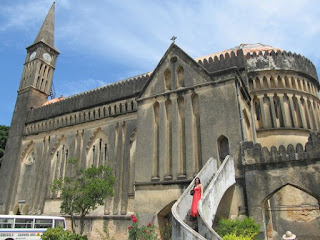christian online services- East Africa No.1 Gospel platform for Tanzania, Kenya, Rwanda, Burundi and South Sudan
Watchman Nee was a unique, committed, controversial, and effective church planter
Miungu ya Misri ya kale - Pre prophet Moses and Christianity
Miungu na wa kike wa Misri ya kale walikuwa kundi kubwa la viumbe na mawazo. Kama utamaduni ulibadilika, vivyo hivyo wengi wa miungu na kile walichowakilisha. Hapa ni baadhi ya miungu inayojulikana zaidi na wa kike wa Misri ya kale.
Anubis aliongozwa roho za wafu kupitia ulimwengu. Picha na De Agostini / W. Buss / Picha za Getty
Anubis alikuwa mungu wa kifo cha Misri mwenye kichwa na kumkamata, na alisema kuwa ni mwana wa Osiris na Nepthys, ingawa katika hadithi fulani baba yake ni Set. Ni kazi ya Anubis kupima mioyo ya wafu, na kuamua kama wao walikuwa anastahili kukubalika kwa wazimu . Kama sehemu ya majukumu yake, yeye ndiye mlinzi wa roho zilizopotea na yatima. Jua kwa nini Anubis ilikuwa muhimu kwa Waisraeli wa zamani . Zaidi »
Picha za shaba za Bastet wa kiungu, kama paka au mwanamke mwenye kichwa. Picha na Maktaba ya Picha ya De Agostini / Getty Images Katika Misri ya kale, paka mara nyingi zinabuduwa kama miungu, Bast ilikuwa mojawapo ya miungu ya feline iliyoheshimiwa sana. Pia aitwaye Bastet, alikuwa mungu wa ngono na uzazi. Mwanzoni, alionyeshwa kama simba, lakini wakati mwingine alionyeshwa na kittens kando yake, kama ibada kwa jukumu lake kama mungu wa uzazi.
Geb, Mungu wa Dunia
Picha za De Agostini / C. Sappa / Getty Katika dini ya zamani ya Misri, Geb inajulikana kama mungu wa dunia na ndiye mfalme wa kwanza wa Misri. Mara nyingi huonyeshwa uongo chini ya mungu wa miungu, Nut. Katika nafasi yake kama mungu wa dunia, yeye ni mungu wa uzazi. Mimea hukua ndani ya mwili wake, wafu wamefungiwa ndani yake, na tetemeko la ardhi ni kicheko chake. Yeye ni zaidi ya mungu wa uso wa dunia - kwa kweli, yeye ni mungu wa kila kitu kilicho ndani ya dunia.
Hathor, Mchungaji wa Wanawake
Isis, Mama wa Mungu
sis mara nyingi huonyeshwa na mabawa yake yameenea nje. Mikopo ya Picha: A. Dagli Orti / De Agostini Picha Library / Getty Images
Mwanzoni mungu wa mazishi, Isis alikuwa
mpenzi wa Osiris. Baada ya kifo chake, alitumia uchawi wake kumfufua.
Isis anaheshimiwa kwa jukumu lake kama mama wa Horus, moja ya miungu
yenye nguvu zaidi ya Misri. Yeye pia alikuwa mama wa Mungu wa kila
kipindi cha Misri, na hatimaye ya Misri yenyewe.
Zaidi »
Ma'at, Mungu wa Kike na Kweli
Sandro Vannini / Picha za Getty
Maat ni mungu wa Misri wa ukweli na haki. Ameoa na Thoth, na ni binti
wa Ra, mungu wa jua. Mbali na ukweli, yeye hujumuisha uwiano, usawa na
utaratibu wa Mungu. Katika hadithi za Misri, ni Maat ambaye huingia
baada ya ulimwengu kuundwa, na huleta umoja kati ya machafuko na shida.
Zaidi »
Osiris, Mfalme wa Miungu ya Misri
Osiris juu ya kiti chake cha enzi, kama inavyoonekana katika Kitabu cha Wafu, papyrus ya funerary. Picha na W. Buss / De Agostini Picture Library / Getty Picha
Osiris alikuwa mwana wa dunia na anga, na wapendwa wa Isis. Anajulikana kama mungu aliyefundisha wanadamu siri za ustaarabu. Leo, yeye anaheshimiwa na Wapagani wengine kama mungu wa chini na ya mavuno.
Ra, Sun Mungu
Ra alicheza jukumu muhimu katika hadithi za Misri. Picha kutoka kwa Hifadhi ya Hifadhi / Hulton Archive / Getty Images Ra alikuwa mtawala wa mbinguni. Alikuwa mungu wa jua, mletaji wa mwanga, na mfuasi kwa fharao. Kulingana na hadithi, jua linasafiri mbinguni kama Ra anaendesha gari lake kupitia mbinguni. Ingawa mwanzoni alikuwa akihusishwa tu na jua la mchana, kama wakati ulivyopita, Ra aliunganishwa na kuwepo kwa jua siku nzima
Tamaa, Mlezi wa Uzazi
DEA / G. DAGLI ORTI / Picha za Getty
Taweret alikuwa mungu wa Misri wa kuzaa na uzazi - lakini kwa muda,
alikuwa anaonekana kuwa pepo. Wanaohusishwa na hippopotomu, Taweret ni
mungu wa kike ambaye huangalia zaidi na kulinda wanawake katika kazi na
watoto wao wapya.
Zaidi »
Thoth, Mungu wa uchawi na hekima
Thoth mwandishi huhusishwa na siri za mwezi. Picha na Cheryl Forbes / Lonely Planet / Getty Picha Thoth alikuwa mungu wa Misri ambaye alizungumza kama ulimi wa Ra. Jua ni nini kinachojulikana kuhusu uungu huu wa kichwa cha Misri, na jinsi anavyohusika katika hadithi ya Isis na Osiris.
The Ark of the Covenant in its Egyptian Context

David A. Falk May 28, 2021 0 Comments 1901 views Share
The Ark of the Covenant as we know it from the Hebrew Bible is steeped in the culture and context of its time (Late Bronze Age, c. 1500–1200 B.C.E.). The people of that age believed in angelic snake spirits spitting fire, entrapped demons, and gods wandering the land. Into this milieu, Moses introduced the Ark of the Covenant, which takes many of these concepts and flips them on their head to create new religious meaning.
Most readers will be familiar with the ark as a reliquary (a box holding holy relics) that was used by Moses to contain and transport the two tablets of the Ten Commandments. Yet the ark was constructed using a visual language that everyone knew 3,300 years ago but is mostly lost to us today. And although ancient writers said more about the ark than any other artifact from ancient history, little of this information is reliable apart from what is found in the biblical texts. Despite the immense progress in biblical studies over the past 200 years, modern scholars have produced relatively little of a serious nature on this subject. This gap provides an opportunity to ask exciting questions and explore the context of the ark in a new and meaningful way.1

DIGITAL RECONSTRUCTION of the Ark of the Covenant according to its descriptions in the Book of Exodus.
Credit: © David A. Falk
Even though it might seem obvious, few of us ever consider that the Ark of the Covenant was a piece of furniture. Furniture is defined as a piece of large movable equipment that creates a space suitable for living or working. So if all you have is an empty room, the space in that room is not very useful. Add a chair, and you have a sitting room. Add a bed, and you have a bedroom. Add a religious altar, and now you have created a ritual space. In short: Furniture helps create and change the nature of a space.
In the ancient Near East, furniture was the preeminent status symbol of opulent wealth. Beds, chairs, and boxes were high-end luxury goods that only few could afford. And the best furniture was fit to be used in rituals to the gods. But to make the furniture suitable for the gods, it had to be decorated with sacred iconography. In ancient Egypt, this iconography included friezes of uraeus (cobras) that spat fire, to keep profane things out, and the <em>Nekhbet</em> (vulture) goddess, who made holy the space between her wings. These icons separated sacred space from profane space. And by using different icons, the Egyptians were able to create different kinds of sacredness. They could even intensify sacredness by putting one frieze inside another, creating a holy of holies.
This brings us to ritual furniture used in the Bible. For example, biblical Hebrew uses an Egyptian loanword tebah, meaning a “basket” or a “box.” A tebah (Egyptian: tebet) was the basket that the baby Moses is placed inside and floated among the reeds (Exodus 2:3), but it is also used of Noah’s ark (e.g., Genesis 6:14). With both Moses and Noah’s ark, the tebah was being used to sanctify the contents of the chests to consecrate them for God’s purpose.

A DJESER CHEST of Thuya, who was the mother of Queen Tiye (the principal wife of Amenhotep III) and grandmother of Akhenaten. Discovered in her tomb in the Valley of the Kings, Western Thebes, it is now in the Egyptian Museum in Cairo. Credit: Photo by David A. Falk
However, the Ark of the Covenant is referred to as an aron, not a tebah, which offers different connotations. An aron can be a coffer, chest, or coffin. For the Egyptians, a coffin was more than simply a box for a corpse. A coffin was a proxy body that served as a place to where a spirit could return. Similarly, other chests had parallels to the ark.
A pega chest was a finely crafted piece of furniture that was draped in scarlet cloth, similar to the cloth that was used to cover the ark (Numbers 4:8). A djeser chest (see image [directional]) had tall legs that elevated items off the ground, and it was used for storing holy or sacred things. Yet another type of chest, the pedes chest, was used in a ritual that took profane offerings and sanctified them so that the offerings could be used in temple rituals. The pedes also had a uraeus frieze, which made the space inside it sacred, and carrying poles near the feet of the chest. This is remarkable because of the four pieces of the Israelite Tabernacle furniture, only the ark is said to have its pole rings attached to its feet (Exodus 25:12).
Finally, there is the Chest of Anubis, a special canopic chest that was used only to carry canopic jars (containing the body’s selected organs) to a tomb. It was covered in gold inside and out (as the ark in Exodus 25:11; 37:2), held sacred objects (as the ark in Deuteronomy 10:2, 5), and had its poles attached to its base. Its lid, which fit over the lip of the chest and was known as the “mercy seat,” bore a statue of Anubis (god who escorted the dead to the afterlife) made in one piece with the lid. These features are markedly similar to the ark.

AN
ANUBIS CHEST from the tomb of King Tutankhamun in the Valley of the
Kings, Western Thebes, now in the Egyptian Museum in Cairo. Credit: Photo by David A. Falk
As we have just demonstrated, the Ark of the Covenant was similar to ritual chests. But it was also similar to Egyptian shrines. Shrines are important in this analysis because they developed out of Late Bronze Age concepts of divinity. People in the Late Bronze Age believed in localism, the belief that a god could only be in one place at a time. This idea often manifested in idolatry. Like the Egyptian coffin, an idol acted as a physical body where a god maintained its presence, becoming one with the substance of the statue. In Egyptian rituals, this idol was “enthroned” on a standard and placed inside the holy space of a shrine. For small chapels or private worship, that shrine was housed inside a small tent, forming a tabernacle. For larger chapels and temples, the shrine was replaced with a barque.
A barque was a special shrine that was built as a model boat. It had a hull, rudders, and figureheads like a boat, all of which makes sense since Egypt was a river culture, where daily life and much of the religious beliefs revolved around the Nile River. Since Egypt’s earliest days, barques had been the ritual furniture par excellence. Every major temple in Egypt had a barque at its center, even the funerary temples of kings. And every day, the Egyptian priests fed and clothed their gods and placed them upon their thrones. Then at night, the priests put their gods to bed in naoses at the back of the temple.

SACRED BARQUE OF AMUN-RE being carried by priests in a procession. This model boat with a shrine for the Egyptian god is depicted in low relief in the Great Hypostyle Hall of the Karnak Temple in Luxor Credit: Photo by David A. Falk
Yet when the Israelites built their tabernacle, they did so without an idol. A sacred shrine without an idol was unprecedented in the ancient Near Eastern world. By excluding idols from the ark, Yahweh flipped the notions and symbols of ancient Near Eastern religion and demonstrated that he was not cared for by human hands, never slept, and was always on the throne. Thus, Yahweh worked within human religious understanding but utterly transformed it.
Furthermore, even though the Ark of the Covenant was a reliquary, the most important part of it was the space above the Mercy Seat, the lid. This is similar to Egyptian palanquin thrones, which incorporated the sacred iconography of barques to create a sacred space where the king (or image of a god) would be seated. Unlike barques, where the sacred space was enclosed and hidden, palanquin thrones had the king or god on full display but still protected in holy space—between a pair of winged goddesses. The Mercy Seat was a lid with a pair of cherubim (angels) whose wings stretched out over the lid of the box (Exodus 25:20). God met with his people from the sacred space between the wings of the cherubim.

WINGED GODDESSES on the corners of the sarcophagus of King Tutankhamun in the newly restored tomb in the Valley of the Kings, Western Thebes Credit: Photo by David A. Falk
When we look at Egyptian ritual furniture during its 3,000-year history, boxes, biers, shrines, barques, and palanquin thrones develop and change over time, augmented with distinct iconography. Sufficient examples of this iconography survive to allow for typological dating with granularity down to the reigns of specific kings. Likewise, some iconography and furniture types fall out of favor so that they form a terminus ante quem, or the latest possible date a particular object might have been made. This means that, when we consider the stylistic influences relevant for the Ark of the Covenant, the iconography as described above suggests a period no earlier than the reign of Amenhotep III (c. 1389–1351 B.C.E.) and no later than the end of Dynasty 20 (c. 1194–1073 B.C.E.). This means that the Ark of the Covenant is consistent with the kinds of ritual furniture that would be expected from Late Bronze Age Egypt.
Therefore, even though Yahweh is not bound to human limits, he
condescended to mankind deferring to human expectations of divinity. The
cherubim had wings that stretched out over the Mercy Seat, and the
shekinah glory met with man from between the wings of the cherubim above
the ark. God did not try to change the beliefs of the people before
engaging them, but instead respected human frailty and human notions of
the divine, inverting or modifying those beliefs to teach humanity new
ideas about himself.
Notes:
[1] I have recently addressed this subject in my book The Ark of the Covenant in Its Egyptian Context: An Illustrated Journey (Hendrickson Publishers, 2020).
Solomon, Sheba, and the Ark of the Covenant

Solomon, Sheba, and the Ark of the Covenant
According to ancient records, the Queen of Sheba ruled the Ethiopian region in about 1,000 BC. This was the same Queen of Sheba that the Bible tells us traveled to Israel to meet King Solomon. According to tradition, the Queen of Sheba and King Solomon conceived a child who grew up to be King Menelik, the first in an unbroken dynasty of Ethiopian rulers.
Remarkably, a number of ancient texts record this tradition, including a 14th century document known as the ‘The Glory of the Kings’ that says Solomon and Sheba had a son named Menelik who later returned to Ethiopia with his family and the Ark of the Covenant.
While we don’t know whether this claim is true, we do know that generations of Ethiopians fervently believe it to be true. We also know that for centuries, certain Ethiopian tribes have practiced ancient rituals very similar to those of Old Testament Israel and explicitly claim descent from the tribes of Israel.
In recent years, modern genetic testing has validated some of these claims. For example, an Ethiopian group known as the Beta Israel – or, House of Israel — was officially recognized by the Israeli government in 1973. The Gefat—another isolated Ethiopian tribe estimated at twenty to thirty thousand people—lives further south in the rural countryside. The Gefat have faithfully observed Jewish laws and customs for hundreds of years. In fact, their name, Gefat, means “the blowers,” and according to their history, they were chosen by the kings of Ethiopia centuries ago to blow a special horn known as the “shofar” ahead of the Ark of the Covenant in official processionals.
The Ark of the Covenant is an ornate box carrying Moses’s copy of the Ten Commandments on tablets of stone, the rod of Aaron, and pieces of the manna that miraculously appeared to sustain the Israelite tribes in the wilderness. The Ark served as the centerpiece of worship and religious life for the tribes of Israel from the time of the Exodus until the Babylonian destruction of Solomon’s Temple in Jerusalem in 586 BC.
The fate of the Ark of the Covenant is one of the great mysteries of history. Was it destroyed beyond recognition when the Babylonians demolished the Jerusalem temple? Was it carried away by the Babylonians and the gold melted down? Or was it secretly whisked away from Jerusalem by courageous priests? No one really knows for sure. Nevertheless, almost 45 million Orthodox Christian Ethiopians firmly believe that the Ark of the Covenant was taken, almost 3,000 years ago, to Ethiopia.
Solomon, Sheba, and the Ark of the Covenant
Randall acts as the lead writer for ColdWater’s Drive Thru History® TV series and Drive Thru History® “Adventures” curriculum.
Vijana Lodge Ifakara; Catholic Diocese of Ifakara
The Lodge is Located in the heart of Ifakara town, the place is very clean, quite and staffs are friendly.
The Lodge is owned by catholic church of Ifakara Diocese and good place to stay and relax.
Also in the morning they provide free breakfast for the guests.
Uhuru Hotel & Conference Centre
Uhuru Hotel & Conference Centre is host to national and international conferences, meetings, symposia, seminars, retreats, personal study and research. We offer consultation and full-service organized tours for individuals and groups.
Uhuru is an ideal place for those who want to escape from their everyday routine, or who would like to relax in an entirely new environment. It is also perfect for banquets, large parties and wedding receptions. The Bamboo Garden Barbecue Restaurant and playground for children encourages family weekend outings. Uhuru Hotel & Conference Centre offers a friendly and comfortable stay for people of every background. It is one of the best tourism and conference centers located on the slopes of Mount Kilimanjaro. There are two beautiful halls which can accomodate 350 people. Both halls have adjoining seminar rooms with an area large enough for groups of 20-30 people.
Uhuru Hotel & Conference Centre has a spacious parking area,
several comfortable lounge areas and a large terrace where visitors
can relax with a friendly chat, read a newspaper, enjoy a cup of tea
or just watch the marabou storks. Chapel services are held daily for
those who wish to participate.
Uhuru Hotel & Conference Centre is designed for offering a full range of facilities which provide comfort for business professionals, tourists and holiday guests alike. There are 52 well-furnished, clean and comfortable rooms for single, twin or double occupancy. In addition there are 5 executive suites for those who need extra comfort. Each of the rooms and suites has a private bathroom. Some of the rooms have a beautiful panoramic view of the majestic Mount Kilimanjaro. All rooms are equipped with telephones.

Get In Touch
-
LUTHERAN UHURU HOTEL & CONFERENCE CENTRE
Lema Road-Shanty Town, P.O.Box 1320, Moshi-Tanzania
Tumaini University Makumira (TUMa)

Tumaini University Makumira (TUMA) , formerly Lutheran Theological College Makumira, is the main campus of Tumaini University Makumira, the university of the Evangilical Lutheran Church in Tanzania (ELCT) established in 1997. We are located in northern Tanzania (East Africa).
CONTACT US
TUMAINI UNIVERSITY MAKUMIRA
P.0. BOX 55, ARUSHA-MOSHI ROAD
USARIVER, TANZANIA.
Telephone: +255753293986
Fax: +255-27-2541030
E-mail: vc@makumira.ac.tz registrar@makumira.ac.tz
The History of Tanzanian Moravian Church
The Tanzanian Moravian Church belongs to the worldwide Moravian Church, a Christian
Protestant Church. The church started in the current Czech Republic in 1457 by
leader John Hus. It spread to many other
places in the world, including Tanzania – established at the end of the 19th
century.
The Moravian Church in Tanzania is divided into seven autonomous and independent provinces, located all over the country. The headquarters of the Church of the South-West Province (MCT-SWP) is located in Mbeya, the fifth largest city in Tanzania. Its influence reaches three mission districts: Mbeya, Mbalizi, and Chunya. Furthermore, the province is supervising two mission areas namely Iringa and Mbozi. The Church is composed of approximately 133 congregations, 200 pastors and 215'000 members (in 2019).
Vision
The Moravian
Church in Tanzania South-West Province aspires daily to know God better and to
have a deeper relationship with Him. He is the one who fulfills our spiritual,
physical and social needs. The Moravian Church is committed to serve Him and
to be a model for the community.
Mission
The Moravian
Church in Tanzania aspires to spread the word of God. The church, by listening to the needs of its
members, also responds to critical issues of the community. It does this by applying sustainable strategies
to improve the social and economic development of the community through
projects in education, health, environment and media.
Core values
- Good conduct and good behaviour in services
- Personnel with good qualifications recognized by the State
- Trust and responsibility
- Cooperation and mutual respect
- Unity through biblical values
- High quality and efficiency in our work
- Bureaucracy is not tolerated
- Humbleness
- Transparency
- Integrity
- Consideration of advice and warnings
- Discipline in the workplace
- Services with high quality
- The Bible and Church Constitution are the Pillars of our Church
Contact
Moravian Church in Tanzania - South West Province
P.O. Box 377
Mbeya
Tanzania
Phone: +255 025 2502643
Fax: +255 025 2504406
Email: mctswp@yahoo.comEmail Webmaster: mctswp.website@yahoo.com
Find us on the map:
Anglican Church of Tanzania
Formerly the Church of the Province of Tanzania, the Anglican Church of Tanzania was established as an independent province in 1970, when the former province of East Africa was divided into the province of Kenya and the province of Tanzania. The latter covers the geographical area of the United Republic of Tanzania with 18 dioceses in the mainland and one in the Islands of Zanzibar and Pemba. The Anglican Church of Tanzania has two distinct church traditions - Anglo-Catholic and Evangelical. This is due to the fact that, dating back to the mid-19th century, two British mission societies worked in Tanzania, the Universities' Mission to Central Africa, UMCA (now United Society for the Propagation of the Gospel, USPG), and the Church Missionary Society (CMS, now Church Mission Society).
The highest decision-making body in the ACT is the synod (general assembly). It meets every three years. The standing committee (general council) is the executive body in between synod meetings. There are also the house (council) of bishops, the officers, and board and committees. The ACT has three semi-indepen-dent associations: the Mothers Union (MU), the Tanzania Anglican Youth Organization (TAYO) and the Anglican Evangelistic Association (AEA). Some of the prominent institutions include the theological colleges (St Phillip's located at Kongwa, and St Mark's in Dar es Salaam); Mtumba Rural Women Training Centre, Vocational Training Centre, Central Tanganyika Press and the Literature Organization (also known as the Dar es Salaam Bookshop). Programmes on HIV/AIDS, tuberculosis and malaria, and community development are among the ongoing activities of the church. Two major future projects are to establish a university by the end of 2006, and a nation-wide telecommunications and database network (2005-2007).
CHURCH CONSTRUCTION PROJECT FOR KIRUMBA SEVENTHDAY ADVENTIST CHURCH MWANZA-TANZANIA
BACKGROUND
The
Kirumba Seventh day Adventist Church is located in The South Nyanza
Conference, near Lake Victoria in Mwanza city northern Tanzania. The
church was built in the year 1965 with a sitting capacity of 400. Being
the first church to be built around here; it is recognized as the
mother church of all the 56 churches in the city.
Following completion of the old church at kirumba, members multiplied very fast above its capacity forcing the church leadership at that time to open companies and later fully fledged churches around the city until it reached the present number of 56 churches.
REASONS FOR BUILDING A NEW CHURCH
During and after that the population in Mwanza city grew larger every day. The church in its mission to propagate the gospel conducted several crusades throughout the years and won souls to Jesus thus making the membership at Kirumba church to grow from 100 in 1965 to 1,200 to date. The church is now small and cannot accommodate all the members. Some members of the church are forced to worship while standing outside the church building. During the rainy season the situation is worse as it disrupts the divine service and impedes hearing as those standing outside will run and squeeze inside to avoid the rain. Also children who always worship outside the church are the most affected during both the rainy and dry seasons as they are forced to shift from one place to another to avoid the scorching sun and the rain. We do not have a children’s church.
Due to this problem the church members have embarked on a new church construction project with a sitting capacity of 1,800. The project will cost $655,184.After completion of the building, like adults, children will have their worship room too. The building will also accommodate an Adventist Radio station, library, conference hall, and offices for various church officials,
This project started in the year 2008. We have managed to do the following; excavation, leveling, mobilization of material like gravel, steel bars, cement,and sand; erection of several concrete columns, and construction of foundation. All these have cost the church about $87,500.
SUMMARY OF THE BILL OF QUANTITIES
The following is the summary of the estimated cost of construction of the church as seen in the bill of quantities; ( all bills in US $)
1. Substructure…………………………………………..99,800
2 .Frames………………………………………………….132,300
3. Stairs……………………………………………………..14,444
4. External walls…………………………………………36,862
5. Doors……………………………………………………..20,277
6. Windows………………………………………………...21,810
7. Roof………………………………………………………..99,239
8. Internal walls and partitions……………………14,938
9. Finishing………………………………………………….90,064
10. Decorations…………………………………………..12,408
11. Plumbing………………………………………………… 6,242
12. Electrical………………………………………………..10,632
13. Site works ……………………………………………….8,668
TOTAL COST…………………………………………….$ 567,684
CONCLUSION
This is a big project which will take many years for the Kirumba SDA members to complete. We as members of the church have contributed about $ 87,500 till now and we are still going on. We want to see this project finished in the shortest period possible. We are therefore appealing to all GOD fearing people around the world to donate to this important GOD’S work.
When completed the church will accommodate 1,800 seated people. And our dear children will worship under a roof without fear of the rain or the tropical sun.
Many people will now come to church as there will be enough space to accommodate all including those who were not coming to church due to the limited sitting capacity and non-conducive environment of the old church.
PREAPARED BY KIRUMBA SDS CHURCH
KIRUMBA SDA CHURCH
BOX 833
MWANZA
TANZANIA
Email- Kirumbasdachurch@yahoo.com
Hope for Tanzania
How Hope for Tanzania started
Hope for Tanzania is a charity which was set up in 2008. It owes its origins to Felix and Naomi Masenge, a Tanzanian Christian couple who used their retirement home to set up a school. More and more children were becoming orphans, making it impossible for them to have a basic education. Other children were denied schooling because their parents could not afford the fees. So in 2001 Felix and Naomi started a nursery school to help children affected by the devastating effect of AIDS on their community.
The Masenges were motivated to take up the challenge of helping to move these children out of poverty - by turning their dream home into a school. Now years later, Tuishime Nursery and Primary School in Arusha (close to Mount Kilimanjaro) has been developed into a thriving school which provides a high quality education for children up to 11 years old. Demand for places is growing due to the excellent exam results consistently placing the school within the top 3% of all Tanzanian schools. The school now has 380 pupils with five year groups having now moved on to secondary school. Every pupil who has taken the Class VII national examinations has achieved success which is an achievement we are extremely proud of. The School is one of the best performing ones in the whole of Tanzania being in the top 5% of primary schools.
Martin and Philippa Grosvenor visited Arusha in 1998 when they met the Masenges and a few years later they started sponsoring children at the school. Since then their interest and concern for Tanzania has grown. The setting up of Hope for Tanzania was a natural extension to this concern and aims to help individuals and communities from one of the poorest countries in the world to realise their potential.
Contact
For further information, fill out the enquiry form below or call us on 00 44 774 859 3190. If you would prefer to email directly, send your enquiry to info@hopefortanzania.org.
St. Agnes Kwiro Girls' Secondary School
Marian Pre and Primary School
Here at Marian Pre and Primary School we recognize that being properly trained and qualified is probably more important today than it has ever been. Whatever you hope to do; find a job, train for a career, prepare for university, you’ll need the right skills and knowledge to prepare yourself. So if you are looking for the widest possible choice of opportunities, check us out!
Our Motto
The goal held out to all is the full development as individuals and as a member of the society. The school will always take it as a guide. The school motto is FOR THE GLORY OF THE MOST HIGH. Which means everything is directed towards the Glory of the Most High.
School Terms
The schools have 2 basic terms. The first term begins in January and ends in June. The second term begins in July and ends in December. There are two midterms also which fall in March/April and September. The academic year begins in January and ends in December.
Subjects Taught
Marian Pre & Primary School teaches Mathematics, Science, English, Kiswahili, Geography, Civics, History, Personality Development & Sports, Information & communication Technology, Vocational Skills and Religion.
Staff
The quality of our staff and resources make Marian an exciting and enjoyable place in which to learn. If you choose to learn with us, you can be assured that we are committed to providing you with qualifications and skills to meet the demands of an ever-changing world and we want to enable you to move on to the world of employment or Higher Education with the confidence and self-assurance to succeed.
We look forward to welcoming you to Marian Pre & Primary School for some of the best days of your life.
Contact Us
Your feedback is welcome. Please send us any comments, suggestions or queries.
Tel: 0232440428
Physical Address: Epiphany/Majengo
Postal Address: P.O.Box 230
Town/Country: Bagamoyo-Tanzania
Email: marianprimary@gmail.com
Kwaya Ya Vijana Kkkt – Amefanyaje?
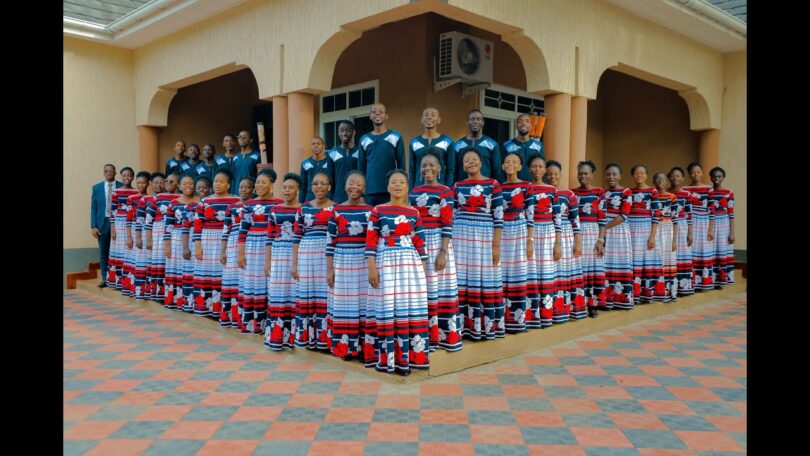
Welcome back, It’s a brand new day and we are happy to bring you a brand new gospel song titled Amefanyaje? mp3 Download by Kwaya Ya Vijana Kkkt. Enjoy!
RELATED: Mwamba Rock Choir – Amenitendeya
I don’t want to know what it was like, I don’t want to know what it was like ..! all I know is I was blind now I see, I was lame now I walk.
Be blessed with this message and God bless you.
AUDIO Kwaya Ya Vijana Kkkt – Amefanyaje? MP3 DOWNLOAD
Pastor Nsiandumi Ndossi – Ujulikane (Prod. Mujwahuki)
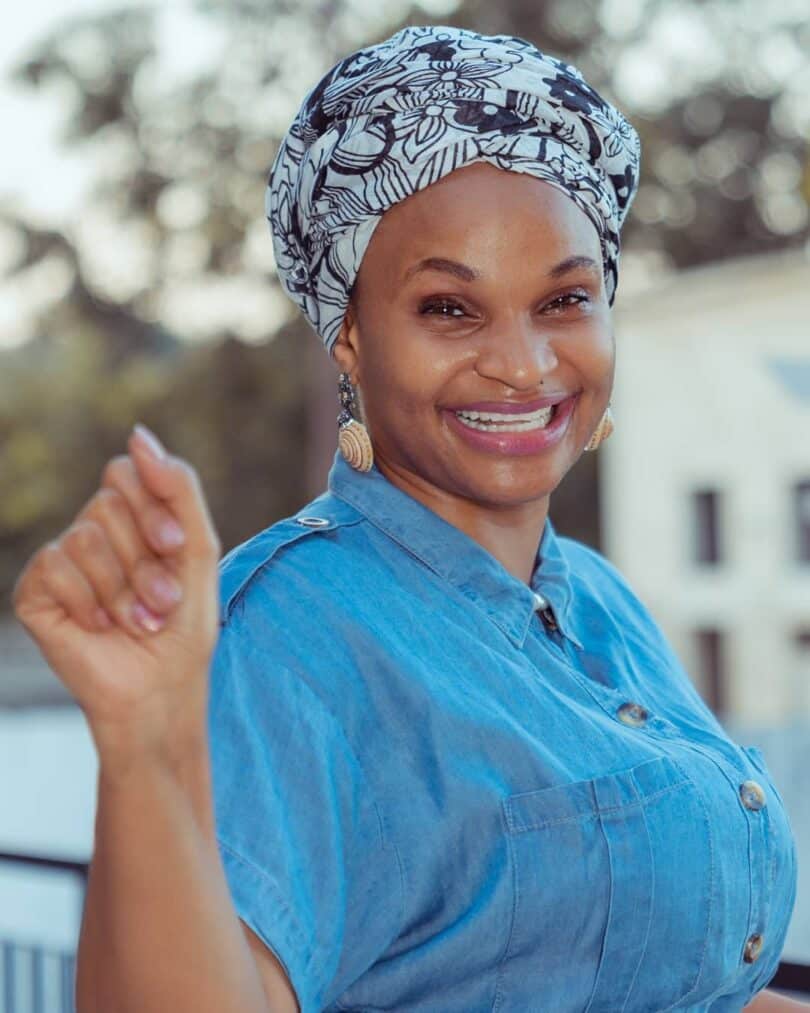
Tanzanian Gospel singer, minister, worshiper creating an atmosphere of worship, prayer, and deliverance through the Truth of the gospel & singing, Pastor Nsiandumi Ndossi has just released a worship song titled Ujulikane.
RELATED: Evelyn Wanjiru – Yesu Ft Eunice Njeri & Godwill Babette
QOUTABLE LYRICS
𝘕𝘢𝘶𝘫𝘶𝘭𝘪𝘬𝘢𝘯𝘦 𝘬𝘢𝘮𝘢 𝘚𝘪𝘧𝘢,
𝘜𝘬𝘪𝘵𝘪𝘺𝘦 𝘫𝘶𝘶 𝘺𝘢 𝘮𝘢𝘵𝘢𝘪𝘧𝘢,
𝘞𝘦𝘸𝘦 𝘯𝘥𝘪𝘸𝘦 𝘮𝘸𝘢𝘯𝘻𝘰 𝘸𝘢 𝘮𝘢𝘪𝘴𝘩𝘢,
𝘕𝘯𝘢𝘶𝘫𝘶𝘭𝘪𝘬𝘢𝘯𝘦 𝘬𝘢𝘮𝘢 𝘚𝘪𝘧𝘢
𝘕𝘢𝘶𝘫𝘶𝘭𝘪𝘬𝘢𝘯𝘦 𝘬𝘢𝘮𝘢 𝘔𝘰𝘵𝘰,
𝘚𝘪𝘧𝘢 𝘻𝘢𝘯𝘨𝘶 𝘬𝘸𝘢𝘬𝘰 𝘮𝘢𝘯𝘶𝘬𝘢𝘵𝘰,
𝘈𝘥𝘶𝘪 𝘢𝘫𝘢𝘱𝘰 𝘞𝘦𝘸𝘦 𝘔𝘰𝘵𝘰 (𝘜𝘭𝘢𝘢𝘰),
𝘕𝘢𝘶𝘫𝘶𝘭𝘪𝘬𝘢𝘯𝘦 𝘬𝘢𝘮𝘢 𝘔𝘰𝘵𝘰.
AUDIO Pastor Nsiandumi Ndossi – Ujulikane MP3 DOWNLOAD
Similar Trending Gospel hits.
Rose Muhando – Wanyamazishe (Prod. Amos Mungwana)
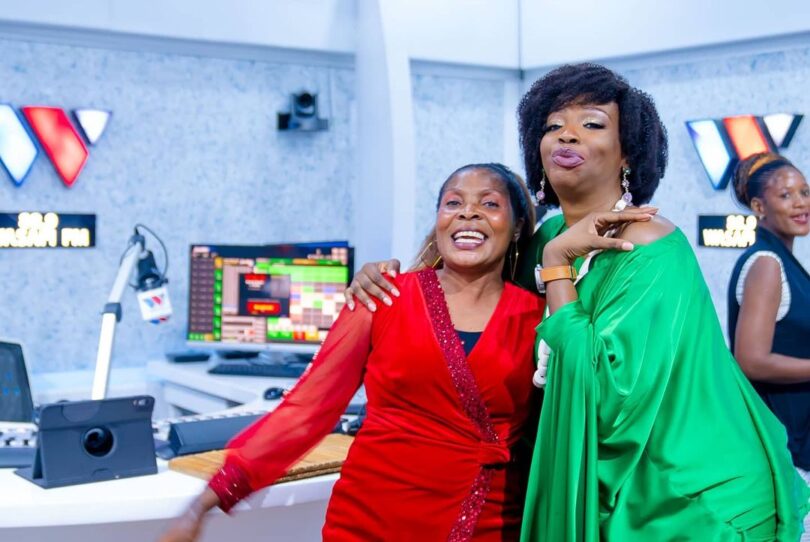
Tanzanian Gospel singer, songwriter, choreographer, born and raised in Kilosa district, Morogoro region, Tanzania, Rose Muhando known professional as Rose Mhando is back with a new single tagged Wanyamazishe.
RELATED: Rose Muhando – Simba (Prod. Amos Mungwana)
Sio kazi yako kuwanyamazisha wale ambao wanakuwazia mabaya yupo Mungu atakae wanyamazisha we endelea kudumu katika maombi na kumngoja Bwana.
AUDIO Rose Muhando – Wanyamazishe MP3 DOWNLOAD
Angela Chibalonza – Yahwe Uhimidiwe (Audio)
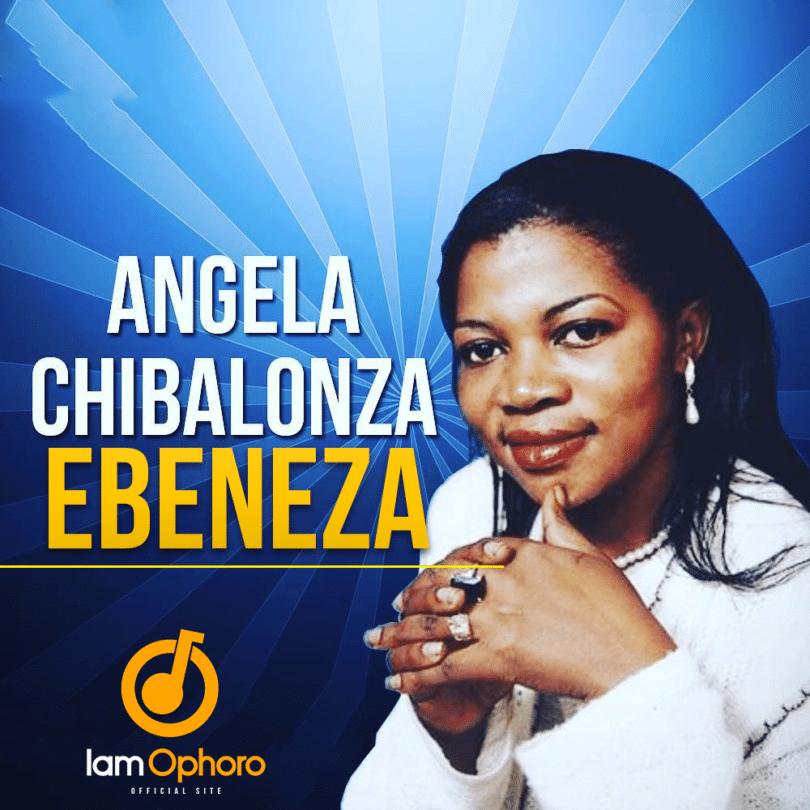
Late Angela Chibalonza was and still is a famous legend gospel singer in Kenya. Her talent manifested itself in early childhood. Hence, has become the delight of our ears as we grow up to who we are today.
Martha Mwaipaja – Ni Siku Kuu (Audio Download)

Tanzanian gospel veteran recording artist, Martha Mwaipaja has released a brand new gospel song titled Ni Siku Kuu.
RELATED: Martha Mwaipaja – Tabibu wa karibu
QOUTABLE LYRICS
Siku kuu! Siku kuu!
Ya kuoshwa dhambi zangu kuu,
Hukesha na kuomba tu,
Ameniongoza miguu,
Suku kuu! Siku kuu!
Ya kuoshwa dhambi zangu kuu.
AUDIO Martha Mwaipaja – Ni Siku Kuu MP3 DOWNLOAD
Size 8 Reborn – Yesu Ni Mwamba (Prod. Teddy B) AUDIO

Kenyan Female gospel recording artist, Size 8 is back with another beautiful gospel song titled Yesu Ni Mwamba, produced by Teddy B.
Jesus christ is the solid rock in which we all as believers should stand any other ground is sinking stand!!
Build your entire life on Jesus christ the solid foundation and when the winds and storms of life come you will stand and not be swept away!!!
Sifaeli Mwabuka – Maombi Yangu (Timiza) (Audio)

Tanzanian Gospel recording artist and minister, Sifaeli Mwabuka is here with a brand new gospel song tagged Maombi Yangu (Timiza).
It’s a brand new day and we are happy to bring you a brand new hit song titled Niko Hapa Baba Niguse mp3 Download by Sifaeli Mwabuka. Enjoy!
Goodluck Gozbert – Kama si wewe (Audio)
Ambassadors Of Christ – Shukrani (Audio)

SHUKRANI is one of our newest favorites…. It’s a rebuke to many of us whose relationship with God is TRANSACTIONAL”.
RELATED: Ambassadors of Christ – Siku za Kilio Zimepita
We always come asking and complaining. But today, we choose to change the focus to THANKSGIVING… NO more complaining…. we now choose to be grateful.
DOWNLOAD MP3 Ambassadors Of Christ – Shukrani
Tags
- Afya 8
- AICT Church College 1
- Article 48
- Association 1
- Biography 73
- Bishop Profile 4
- Buriani Magufuri 9
- Capuchin Friars 2
- Cathedral 2
- Catholic Secondary School 9
- Catholic Church Radio 1
- catholic girls Secondary School 1
- Catholic Hospital 1
- Catholic Organization 2
- Catholic Pre & Primary School 5
- Christian Faith 1
- Christian International NGO 40
- Christian News 2
- Christian Organization 4
- Christian Radio 2
- Church Charity 1
- Church History 53
- Church Hospital 3
- Church Hotel 1
- Church Institute 1
- Church Location 11
- church Lodge 1
- Church Nursing College 1
- Church organization 2
- Church Profile 1
- Church Project 1
- Church University 6
- Church University Ifakara 1
- Company 1
- Gospel 1
- Gospel Group 1
- Gospel Singer 60
- Gospel Song 105
- Habari 2
- Hoja 1
- International Ministries 1
- Kilimo 1
- Kitabu 1
- Location 1
- Location & Address 20
- Lutheran Bible College 1
- Lutheran Deaf School 2
- Lutheran Nursing College 3
- Lutheran Ongoing Project 1
- Lutheran Secondary School 7
- Lutheran Vocational College 1
- Mahubiri 13
- Mahusiano 13
- Makala 39
- Moses Kulola - God's General 2
- Muhubiri 3
- Mwl Mwakasege 3
- NGO 11
- Opinion 2
- Prayer Request 1
- Preacher 9
- Preacher Biography 12
- prophet Kakande 1
- Relationship 8
- RIP 1
- Scholarship 1
- Singer Profile 12
- Special Needs School 1
- Swali 5
- Tangazo 1
- Tanzania Politics 1
- The Place to Visit as Christian 9
- video 1
- Wahubiri 43
- Waimbaji 28
















